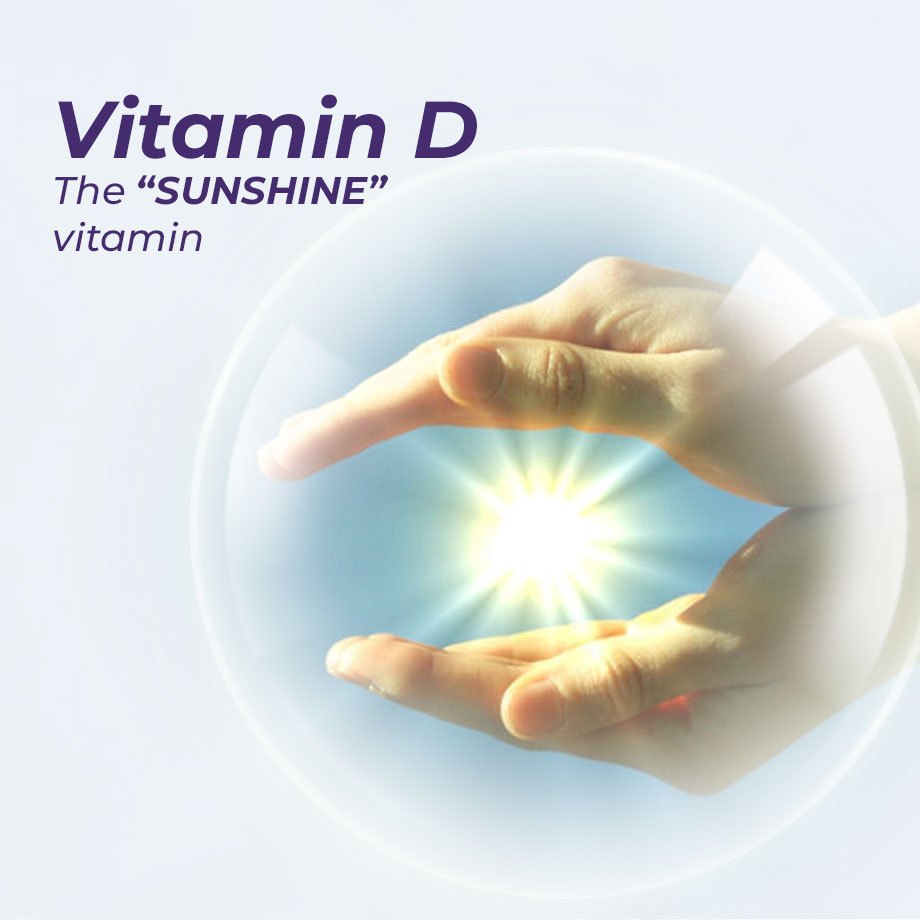WHAT IS VITAMIN D?
Despite the name, vitamin D is not actually a vitamin! Vitamin D is a “pro-hormone” that can be produced in the human body.
Vitamin D is best known for regulating the absorption of calcium and phosphorus, and it is also known for helping regulate the immune system. Without adequate Vitamin D, a person is at risk for developing weak or fragile bones AND calcium in one’s diet will not be absorbed as efficiently. Vitamin D plays a larger role in immune system functions which affect resistance to infection and the risk of autoimmune diseases and malignancies.
Sufficient vitamin D can reduce a person’s risk of:
- Osteoporosis
- Inflammation
- Cardiovascular Disease
- Cancer
- Autoimmune Disease
- Diabetes
- Depression
- Multiple Sclerosis
- Muscle Aches
- Flu
Sensible sun exposure on bare skin for an estimated 15 minutes twice a week can allow most people to produce sufficient vitamin D. Vitamin D supply can be especially low in the winter when people spend more time indoors and, therefore, have less and weaker sun exposure.
It is estimated that more than 1 billion people have inadequate vitamin D stores in their bodies.
WHAT IS THE DIFFERENCE BETWEEN VITAMIN D2 AND VITAMIN D3?
Most research suggests that vitamin D3 is the preferred form of vitamin D for humans.
- Vitamin D2 is produced by some plants in response to ultraviolet radiation.
- Vitamin D3 is produced by humans and animals in response to ultraviolet radiation.
Vitamin D2 and D3 are absorbed similarly by the human body, but they are metabolized differently. Studies have shown that vitamin D3 is functionally more effective than D2.i Vitamin D2 is not as good for loading or maintaining vitamin D levels. It has also been shown that vitamin D3, but not D2, offers a noticeable decrease in overall mortality.ii
WHO SHOULD TAKE VITAMIN D SUPPLEMENTS?
Vitamin D supplementation may benefit:
- Adults not regularly exposed to the sun
- Older and Elderly Adults
- Dark-skinned Adults
- Pregnant & Breastfeeding Women
- Pre-Menopausal & Post-Menopausal Women
- People with chronic kidney disease
- People on long-term steroids
Sun exposure, diet, and aging affect Vitamin D production and metabolism. Older adults and those not regularly in the sun need Vitamin D supplementation. Pre- and post-menopausal women are especially at risk for Vitamin D deficiency, but younger persons and men are not immune to the problems caused by low vitamin D levels. Pregnancy is adversely affected by low vitamin D levels. Dark-skinned persons have a higher risk of vitamin D deficiency.
Persons with metabolic, liver, bone, kidney, and digestive diseases and children, pregnant women or persons unsure of their health may need vitamin D3 supplementation but should consult a healthcare provider before using this or any nonprescription supplement.
Persons with some malignancies, kidney stones, and calcium or parathyroid disorders should take vitamin D only under the supervision of a physician.
ARE THERE NATURAL SOURCES OF VITAMIN D?
There are natural sources for Vitamin D, but dietary sources are rarely adequate.
The main natural source of vitamin D is sunlight. Exposure of the entire body to sunlight to the point of mild redness will raise the blood level of vitamin D about as much as 20,000 IU of D3. It has been estimated that full summer sun exposure of the neck, back, and arms for about 15 minutes twice a week will provide adequate vitamin D levels in young adults. Sun effect on the body depends on season and distance from the equator, age, and pigmentation of the skin.
Some fish oils are fair sources of vitamin D3. A tablespoon of cod liver oil a day should do the trick, but this amount can present the problem of too much vitamin A.
References:
I) Dr. Edward Group. Vitamin D3 vs. Vitamin D2 – What’s the Difference? June 9, 2014.
II) Bjelakovic G1, Gluud LL, Nikolova D, Whitfield K, Wetterslev J, Simonetti RG, et al. Vitamin D supplementation for prevention of mortality in adults. Cochrane Database Syst Rev. 2011 Jul 6;(7):CD007470. doi: 10.1002/14651858.CD007470.pub2.




